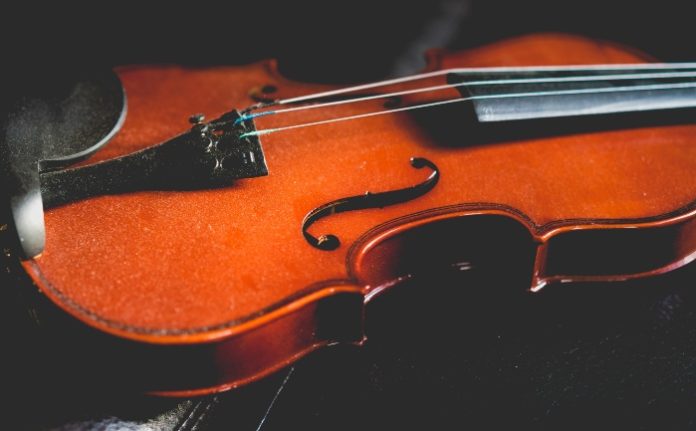You’ve probably asked yourself why was it called string when most of its parts are made of wood? Well, this is because it’s through its strings that are usually made of nylon, steel, or gut that sounds are produced.
The family of strings, which share curvy wooden bodies and necks, come in four variations – violin, viola, cello, and double bass also known as the contrabass. The violin and viola are responsible for producing high pitched sound, while the large cello and double bass are designated to produce low pitched sound.
VIOLIN
Did you know that there are a lot of violins played than any other instrument in an orchestra? Usually, these 30 violins are divided into two sections; the first group usually plays the melody while the latter alternates between the melody and harmony.
Violins are played by placing it on your chin and left shoulder while your left hand will be the one to hold its neck and press down on the strings as your right hand moves across it using a bow or plucking of strings.
VIOLA
If the violin is considered the baby of the strings family, the viola serves as the older sibling. Violas usually produce a rich and warm sound. In an orchestra, there are almost 14 violas that play harmony alongside the second group of violins.
A viola is played the same way with a violin – placing the instrument between your chin and your shoulder while your left hand holds its neck and your right hand moves across using a bow or plucking of strings.
CELLO
Similar to the features of a violin, but only larger and has thick strings, the cellos are considered to produce a human-like voice and have the ability to produce wide-array of tones – from low to higher notes.
Usually 8-12 in an orchestra, cellos can both play melody and harmony. As the cello is too large to be put between your chin and shoulder, it’s usually placed between the cellist’s knees with its body close to yours and its neck resting on your left shoulder. Playing cello is in the same manner of playing viola and violin, using a bow to move across the strings or by plucking it.
DOUBLE BASS
As the eldest and largest in the string family, the double bass produces the lowest notes. Usually, 6 to 8 double basses make up the orchestra and play the harmony alongside its other family members. Since the instrument is enormous, one has to stand up or sit in a high stool to play it. It’s actually an advantage if you have long arms, big hands, and even long legs.
Similar to cello, the double bass is placed between your knees with its neck resting on your neck shoulder. And just like the rest of the family members, it’s played through moving the bow across the strings or by plucking it with the help of your right hand.
HARP
Unique from the other stringed instruments, the harp is six-feet tall and has 47 strings of various lengths. They both play melody and harmony in an orchestra. A harp should be placed between your legs with its neck lying on your right shoulder. You play the instrument by plucking the strings with your thumb and fingertips. It has seven (7) pedals responsible for switching the pitch of the string.
These are just some of the information about the string family that you should know. We hope this article brought you new knowledge about the instruments and one day help you decide which one of these you’d want to play.
Readers Might Also Like:
 How Much Do Artists Really Get Paid For Streams – A Financial Breakdown
How Much Do Artists Really Get Paid For Streams – A Financial Breakdown
 Tips To Help You Monetize Your Site or Blog
Tips To Help You Monetize Your Site or Blog
 Every XXL Freshman Cover Since 2007
Every XXL Freshman Cover Since 2007

